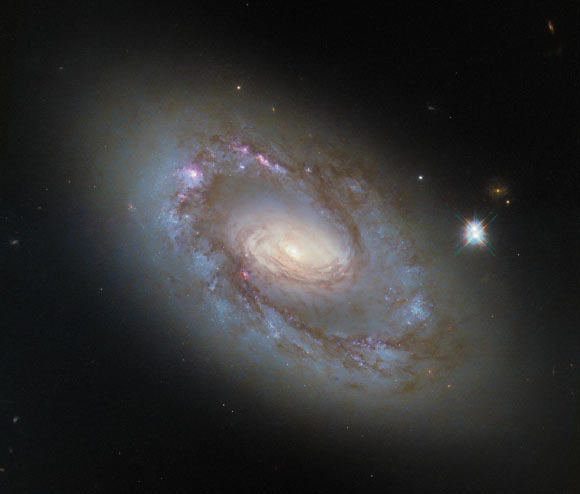The NASA/ESA Hubble Space Telescope reveals a luminous galactic center and majestic spiral arms in this new view of NGC 4102.

This Hubble image shows NGC 4102, an intermediate spiral galaxy 55.4 million light-years away in the constellation of Ursa Major. Image credit: NASA / ESA / Hubble / G. Fabbiano.
NGC 4102 is located about 55.4 million light-years away in the northern constellation of Ursa Major.
This intermediate spiral galaxy was discovered by the German-British astronomer William Herschel on April 12, 1789.
Also known as UGC 7096, NGC 4102 is home to an active galactic nucleus.
“Active galactic nuclei are luminous galactic centers powered by supermassive black holes that contain millions to billion times the mass of our Sun,” the Hubble astronomers said in a statement.
“As these black holes ensnare gas from their surroundings and draw it close with their intense gravitational pull, the gas becomes so hot that it begins to glow and emits light from X-ray to radio wavelengths.”
“NGC 4102 provides an ideal opportunity to study the ways in which active galactic nuclei interact with their home galaxies,” they said.
“Active galactic nuclei come in many different flavors, from extremely powerful types that consume massive amounts of matter and shoot out jets of charged particles, to calmer types that sip gas from their surroundings and glow more faintly.”
“NGC 4102 likely falls into the latter category. It’s classified as Compton-thick — a way of saying that its nucleus is obscured by a thick layer of gas — and a low-ionization nuclear emission-line region (LINER).”
“LINER galaxies are identified by emission lines from certain weakly ionized elements, and they can be powered by a supermassive black hole that is lazily collecting gas from around it.”
A previous image of NGC 4102, made from data taken with Hubble’s Wide Field Planetary Camera 2 (WFPC2), was released in 2014.
“The new version presents an upgraded view of the galaxy, using data from Hubble’s Wide Field Camera 3 (WFC3), which replaced WFPC2 in 2009 and improved upon its resolution and field of view,” the researchers said.
“The new observations come from a program that will combine visible-light images from Hubble with X-ray information from the Chandra X-ray Observatory to study the relationship between NGC 4102 and its active galactic nucleus.”







